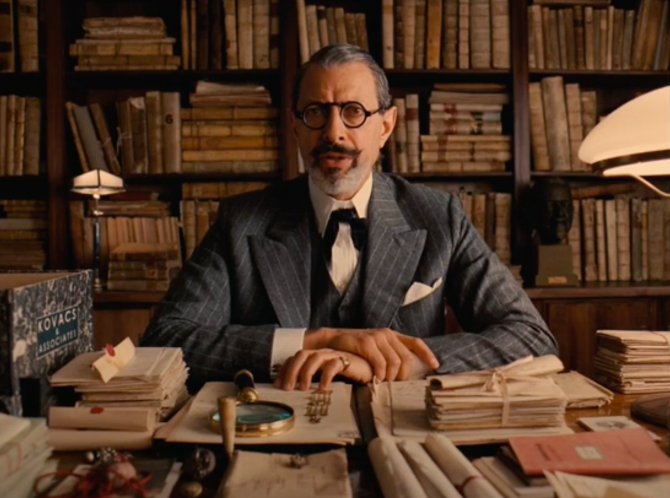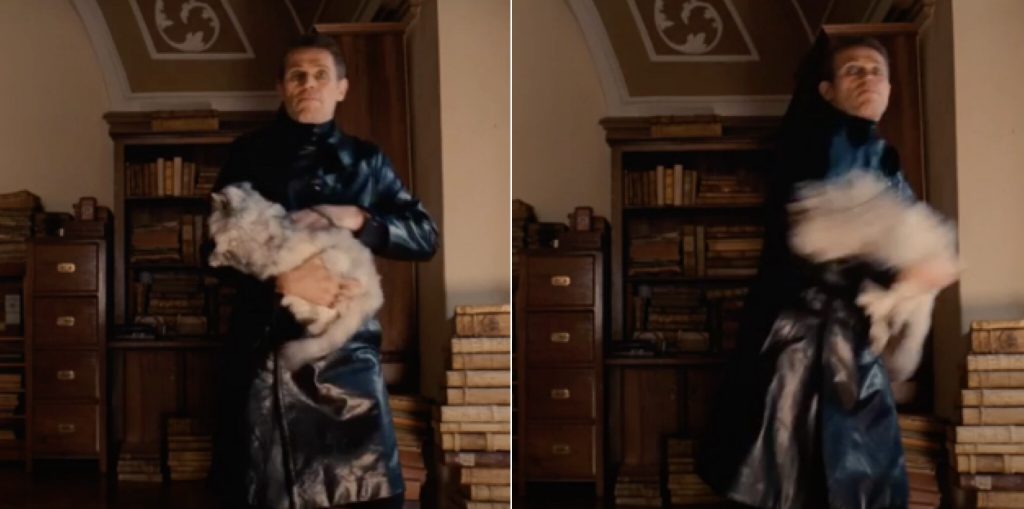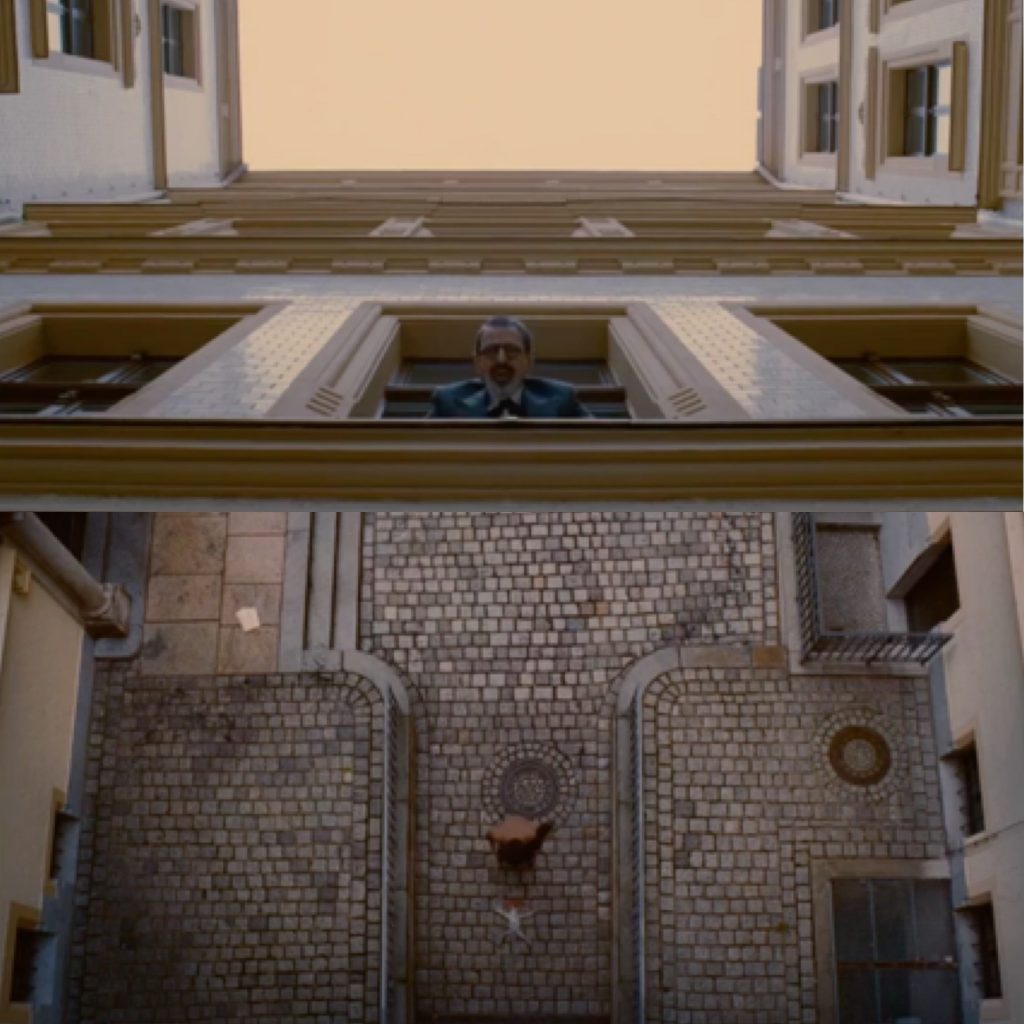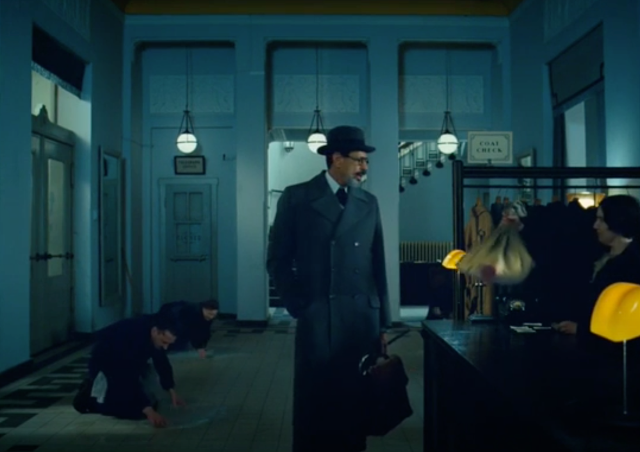“Did he just throw my cat out the window?”
The Grand Budapest Hotel (Wes Anderson, 2014) uses the death of a domestic animal to drive the dark comedic elements within the film, without accentuating sinister undertones that the audience would expect to accompany the death of a beloved animal. Anderson transforms the cat into a psychological symbol causing reflection of one’s self, enabling the audience to assess their own capacity for empathy. During a sequence between Kovac (Jeff Goldblum) and Dmitri (Adrien Brody), Kovac’s cat is thrown out of the window. Anderson’s stylistic choices ensure the audience are encompassed in the visually pleasing series of events in which the audience can digest the inevitability of death without becoming attached to the sorrow surrounding it.
It is valuable to present death this way as not only does it adhere to the genre, but on a deeper scale it leads to questions about the morality of death, and how the audience should be aware as to how mundane and simple the act of death can be. By disassociating death with its usual conformities, Anderson has rebranded the horror and grief that commonly accompany death.

Anderson enjoys his use of deep focus shoulder profile shots, which jump back and forth between the characters within the frames. The symmetrical shots are bordered by the exiting of characters or props from the frame, and within this scene, the cat is unfortunately the prop, which is thrown onto the street below. The cat’s death happens with almost little to no screen time, as it is heard squealing whilst being hurled. The lack of camera focus, the calm nature of Kovac, “Did he just throw my cat out the window?” accompanied with the extra-diegetic folk music provides a sense of amusement, rather than grief or anger. This frame is particularly organised, with the grid shaped background and the neatly compiled desktop, which reflects the order of the film. Anderson has a particular interest in creating offensive behaviour in a civilised setting, thus portraying chaos versus the organised.

The low-angled shot places the audience in the position of the street below, creating an active and entertained audience. This is followed by a point of view shot from Kovac’s perspective, whereby the cat is comically sprawled across the pavement. These shots take place for no longer than a second each, emphasising the cat’s death is not to be greeted with particular sadness but rather with Anderson’s unique wry and disconnected humour. This type of humour is stimulating as it derives from the characters being able to uphold an even temper even in the most chaotic scenes.


As the scene progresses, the colour palette alternates. The original use of warm, copper tinted hues changes to a menacing steel blue, thus reflecting on the death of Kovac’s domestic animal and how this has affected him emotionally. The unusual blend of death of a domestic animal juxtaposed with adventure sound scores, an array of point of view shots creates a scene which provides the audience with a mixture of comedy, satire and disbelief in which the cat’s death is not dwelled upon, thus highlighting a recurring motif within Anderson’s films surrounding the inescapability of loss.
h
Bibliography:
Burt, Jonathon, Animals in Film (London: Reaktion Books, 2012)
The Grand Budapest Hotel: “Cat Deceased” (2017) YouTube Video, added by Pil MDZ <https://www.youtube.com/watch?v=n9b0DAkc-ys> [Accessed 10 December 2020]